When you are on a glacier covered with snow, it may be difficult to visually detect crevasses. Just see the picture below. Who would say that there are crevasses on that glacier? But there are many of them under that smooth surface.
Signs of crevasses in a glacier covered with snow are areas with sagging and unusual depression, and also with slightly different snow color. It is usually easier to detect such places from a distance than when you are already on a glacier with crevasses. But crevasses are not always detectable, bear this in mind.
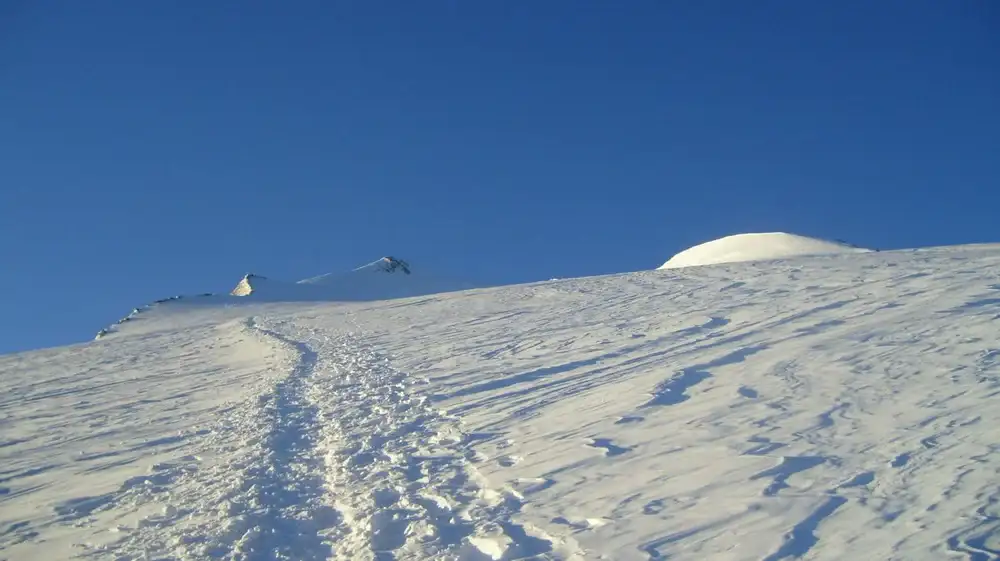
Visual inspection of a glacier from a safe distance
It is best to show some examples in photos, and I have them plenty of my own. So you see the picture above, this is from my tour to Bishorn (4135 m) in Swiss Alps.
The glacier looks so smooth when covered with snow, but there are plenty of crevasses that appear later in the season when the fresh snow layer melts. However, there was a video (later removed) about Swiss rescue team getting out a man from a crevasse, who disappeared on that same slope shown in the picture.
But see also the following picture, this is the north-east side of Barrhorn in Swiss Alps. It is described in detail in my tour so follow the link to read more.
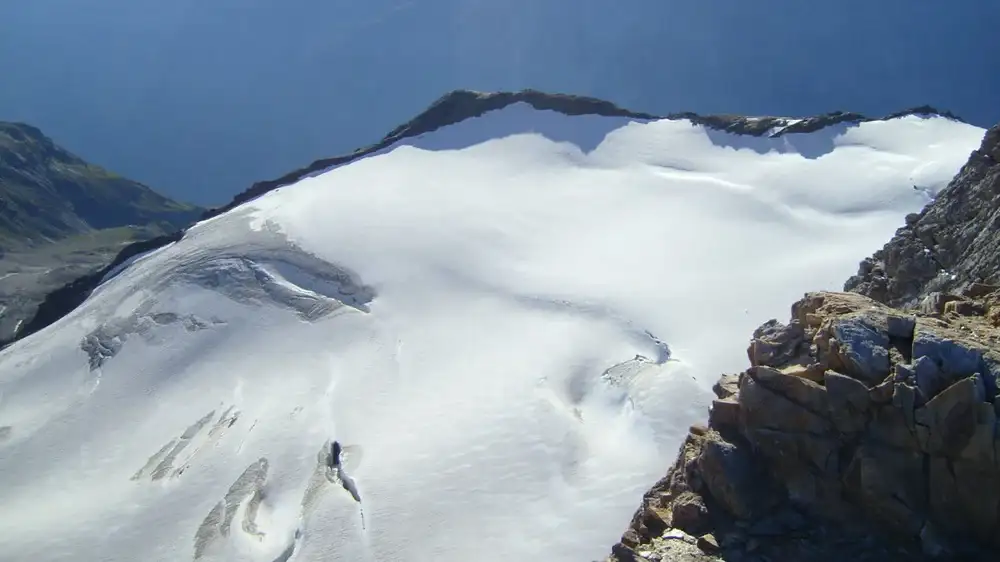
In fact, this is a curiosity by itself bearing in mind the fact that Barrhorn is likely the highest mountain in the Alps with a snow-free normal route in summertime. This sounds like a contradiction, but this normal route goes on its west side which is indeed without snow in summer.
The photo above was taken late in the morning. Sunlight comes from above (see the shadow of the rocks) but at a very small angle relative to the steep slope of the glacier. This is why you can so easily see the position of the crevasses under the snow.
Something similar you can experience on some other glaciers, dependent on their slope orientation and the position of the Sun. So this can be also in the late afternoon.
Of course, as you see some of crevasses are open and clearly visible. But the story here is not about these, it is about crevasses that you cannot see when you are on the glacier.
So imagine that you are in situation when you can observe such a glacier, and you will have to cross it next morning when visibility is low, or it is even dark if you do an alpine start.
Inspect existing photos
If you are not in a situation to directly and in advance inspect a glacier, try to find photos and videos that are available online.
Glaciers do change in time, but you should still have plenty of useful information even from not so recent sources of that type.
What to do with such an observation?
It may be a good idea to make a sketch of the positions of crevasses that you detect by such an observation. Such a knowledge may save you from lots of trouble next day.
What can we really see from the distance or from a photo?
Now, what can be concluded from the picture above? Here are a few things:
- Can you see some areas that are with sagging? So these are crevasses that are covered with snow. They may be filled with the snow, or these are just bridges. In most cases you can probably notice them even when you are on the glacier.
- You can see that they are slightly different in color, this can be seen from such a distance, but most likely not when you are on the glacier.
- There are obvious differences in their width, so it is best to avoid wide ones.
- Even if you do not see anything because of a deep fresh snow, likely places for crevasses are in the areas where the slope changes its angle. So you can have an anchored and stagnant part of an ice shelf, and a lower part that is detached and it moves because of the terrain shape.
What can we learn from inspecting easily visible crevasses?
If there are crevasses that are visible, as in the picture below, and you have smooth areas in between, this does not mean they are safe for passage.
Most likely, those crevasses continue all the way from one side to another. They could possibly extend under your path even though you do not see them. Those areas with snow are simply deeper, and there is more snow accumulated there.
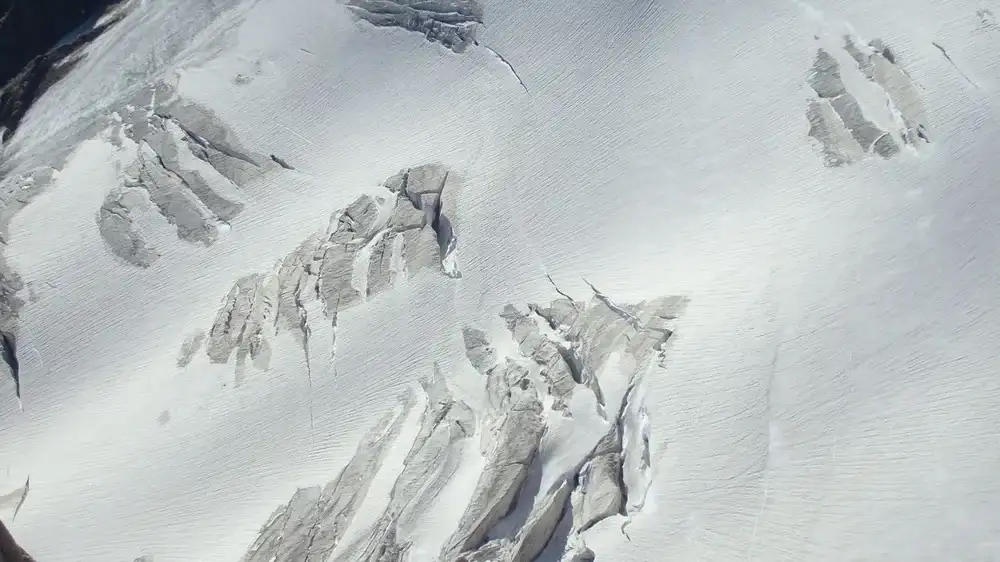
From crevasses on the sides you can get some idea of how wide may be those that are covered by snow. So this may help to plan how to pass this potentially dangerous areas.
Types of crevasses
When you watch a dry glacier (with melted snow), you will see a variety of formations. If this is an elongated glacier tongue, you will see transverse, shear, and longitudinal crevasses with respect to the long axis of the glacier.
Transverse crevasses appear when there is increased speed of a glacier flow. So you can expect them in the areas with steepening slopes.
Shear crevasses develop in areas where there is a steady main flow of the glacier. At the edges of such a steady flow you can expect such series of marginal shear crevasses.
Longitudinal crevasses are in the direction of the glacier main flow. They can be expected in areas where the valley spreads, so the ice spreads sideways as well and this creates such longitudinal cracks.
Sometimes, a crevasse can be on a really unexpected place, you will realize this from the video, have a look:
What to do if you cannot detect crevasses visually?
I mentioned most typical types of crevasses in a glacier tongue, but in real life this all is far more complicated.
See the photo below, this is a white hell of snow-covered crevasses on a massive glacier plateau in Swiss Alps. Here, there are no obvious general directions of crevasses, they are everywhere, some observable but most of them not.
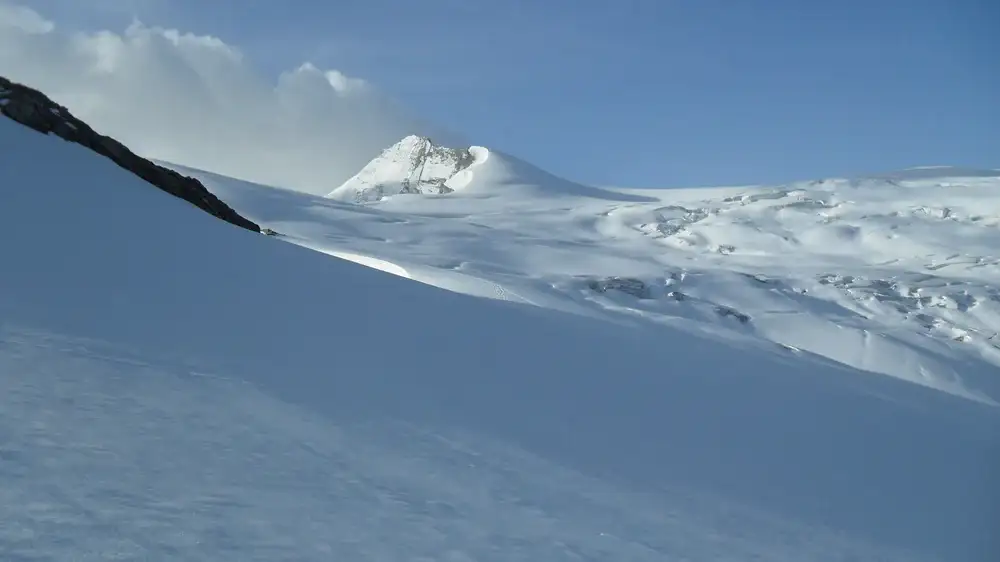
In the lower part of the route on that glacier, there was a guide and a woman on a rope behind him. At one moment I saw her dropped into a crevasse to the half of her body.
But she was on the rope so she was fine. I even have a picture of them shown below walking over the glacier at some distance from me. Later I turned to my separate route to Pigne de la Le.
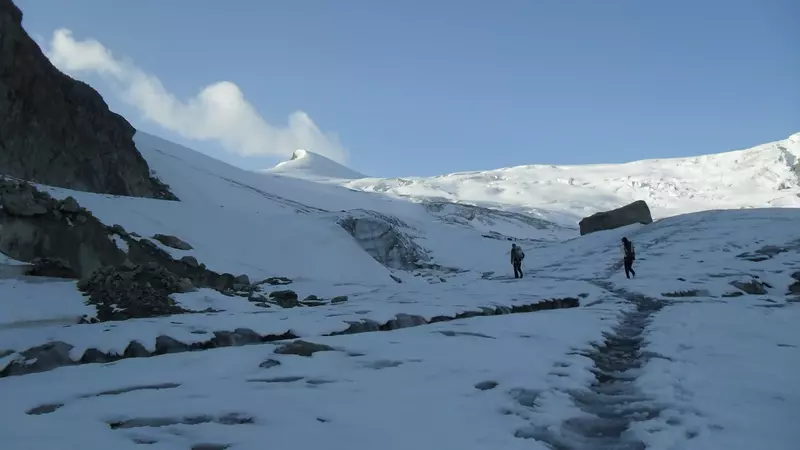
Being on such a terrain is like walking on a thin ice; you would want to be weightless. I mean, assuming that you are an idiot like me to be there solo.
On one other occasion, I was on the glacier shown in the picture below, this is from my tour to Rosablanche. I have seen its pictures later when the snow was melted and it was full of crevasses.
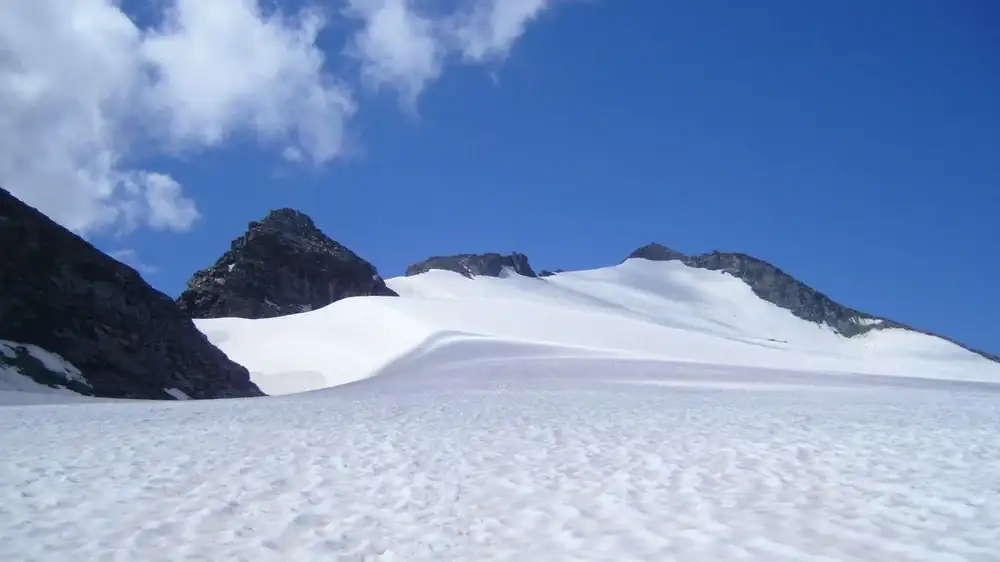
But when I was there, the situation was as in the picture. So I was walking over those huge ridges of the snow that you see next to the rocks. My estimate was that I was safer there than walking over depressions on the right. It worked.
If you check the photo carefully, you will realize that this line of elevated accumulation of snow continues almost uninterrupted towards the summit. So this was my direction over the glacier.
Sometimes you can see boulders on the glacier as in the picture below, this is from my another tour in Swiss Alps. If the glacier can keep them on the surface, most likely it will keep you as well. So you might want to walk over them or close to them.

Summary
All in all, when you are on a glacier, you never know what may be under your feet. If you do not see crevasses, do not assume you are safe. Sometimes you can detect a crevasse on a glacier, but there may be situations when you cannot. Still, there are ways to navigate in such situations. Some are mentioned above.
I have been many times on glaciers solo, not because I wanted but because I simply did not have a partner. But going solo over a glacier is indeed totally irresponsible.
You have seen the top picture above, this was my solo tour, so it can really look beautiful. However, the feeling is not so great when you know that you can end up in a crevasse.
Some suggest probing suspicious places with your ice axe, but it is usually too short for such a purpose and I would not rely on it.
Here is yet another short video, a real footage from a crevasse in Swiss Alps, have a look:
Bookmark this site and come again, you will always have new texts added here. There is a comment box below so let me know if you have questions or comments. Thank you for reading and have a nice day.
Leave a Reply